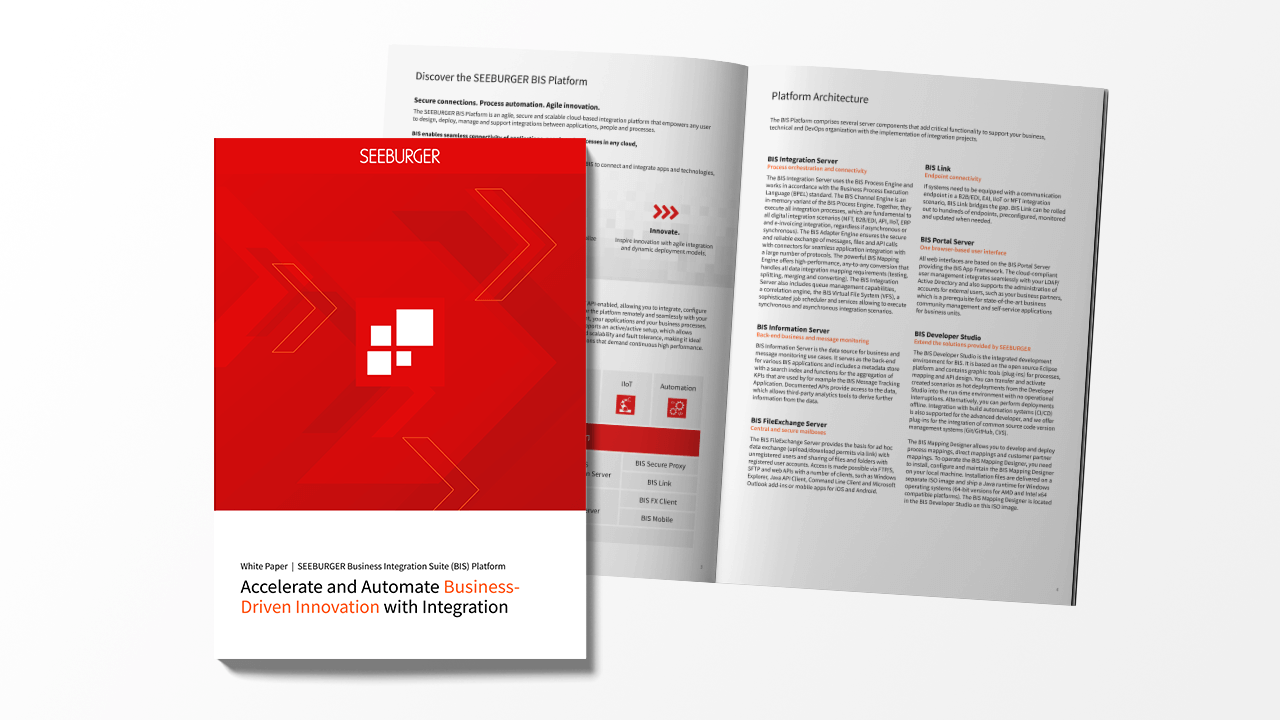
What is an ANSI X12 EDI 810 Message?
Find out how the ANSI X12 EDI 810 message is reshaping the procurement process.
1. Executive summary: ANSI X12 EDI 810
ANSI X12 EDI 810 messages represents an electronic invoice exchanged between suppliers and their customers. The 810 message is based on the ANSI X12 standard and is applied in various industries i.e. automotive or retail.
2. The use of the ANSI X12 EDI 810 message
Partners can use the ANSI X12 EDI 810 message in order to automatically exchange invoicing information and to directly align the billings against the representative orders. Therefore the ANSI X12 EDI 810 message consists of segments containing billing information for the exchanged materials/services and information about sender and recipient. By that the EDI 810 message is designed to replace the paper-based invoice when partners communicate via EDI (Electronic Data Interchange).
3. Processing of ANSI X12 EDI 810 message
The EDI 810 message is generated by the supplier and sent to the customer. The receiving system on customer side validates the message against the ANSI X12 EDI 810 specifications and sends back a functional acknowledgement (ANSI X12 997 message type) after successful reception. The functional acknowledgement confirms the reception of the invoice message to the supplier. As the next step the EDI 810 data will be forwarded to the customer’s ERP system where it will show up as new invoice record.
ANSI X12 EDI 810 message and ANSI X12 EDI 820
Based on the financial processes definition it is possible that an ANSI X12 EDI 820 message is sent as follow up document on the ANSI 810 message from the customer (buyer) to the supplier (payee). The EDI 820 message or Remittance Advice contains further instruction how the payment is performed. This information helps the suppliers to reconcile payments they receive against invoices they have issued.
EDI workflow for processing of the ANSI X12 EDI 810 message
In general the documents which are exchanged between EDI trading partners follow a typical sequence of business processes, which depends on the type of industry. The figures below shows the role of an ANSI X12 EDI 810 standard and which other message types are used in a manufacturing or retail scenario:


Typical errors when using the ANSI X12 EDI 810 message
Common problems that appear when exchanging invoice messages are based on wrong or missing data. If data is transmitted inside an ANSI X12 EDI 810 messages that is unknown in the supplier’s ERP system, an error on processing step will be the result. Typical issues in context of EDI 810 messages are:
- Parts, regarding delivery or regarding order (missing or wrong reference)
- Prices or price units are missing
- Payee or payer reference is wrong or missing
4. How does a typical ANSI X12 EDI 810 structure look like?
The ANSI X12 EDI 810 guideline specifies segments and elements which needs to be used to properly built up an EDI 810 message. EDI solutions – which can either be an on-premises solution or EDI Cloud Service – send, receive and process EDI messages like the EDI 810. To ensure a high quality of the electronic invoice process it is mandatory to follow the ANSI 810 standards.
A typical ANSI X12 EDI 810 message includes:
- Invoice number
- Invoice date
- Reference to shipment (date of shipment of the single items)
- Terms of payment
- The actual items that are charged
- Surcharges/discounts
ISA*00* *00* *08*SENDER *08*RECEIVER *231014*1507*U*00401*000000001*0*P*>~
GS*IN*APP SENDER*APP RECEIVER*20231014*1507*0001*X*004010~
ST*810*0001~
BIG*20231014*INVOICE1*20231014*ORDER1~
REF*IA*VENDOR ID~
N1*SU*SUPLIER NAME*ZZ*11222333~
N1*ST*SEEBURGER AG*ZZ*00000085~
N3*EDISONSTRASSE 1~
N4*BRETTEN**75015*DE~
ITD*08*3*1**30*******CHK~
FOB*PP~
IT1**420*CA*15.6**UP*123456789*IN*987654321~
PID*F****DESCRIPTION~
TDS*655200~
ISS*420*CA~
CTT*1~
SE*15*0001~
GE*1*0001~
IEA*1*000000001~
5. Benefits using EDI and the ANSI X12 EDI 810 message
Benefits exchanging invoice information via ANSI X12 EDI 810 for both – the customer and the supplier – are:
Benefits specific to suppliers/payee
Benefits specific to customers/payer
6. How is the ANSI X12 EDI 810 format called in other EDI message standards?
The ANSI X12 standard is an EDI standard widely used in NAFTA region. EDIFACT and VDA messages are more common in other regions like the European Union or Asia. For exchanging invoice information you can use the EDIFACT INVOIC standard. You also come across the VDA4906 and VDA4938 standard to exchange invoice data in the automotive industries.
7. Automate the EDI 810 Invoice message with flexible operating models
When you look into replacing an outdated EDI solution you worked with so far, you should evaluate all options how you want to take your EDI solution on the next level. SEEBURGER provides you all options including on-premises as an in-house operation, or leveraging it as an EDI Cloud Service in the SEEBURGER Cloud or in public cloud environment (e.g. Google, Azure, AWS etc.).










